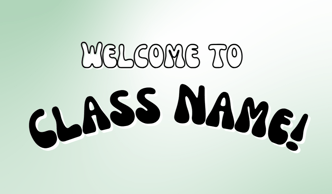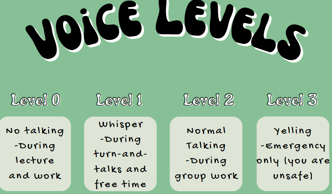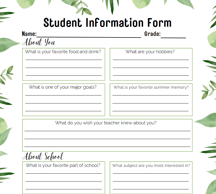First Week of School Lesson Plans - Middle School/High School Back to School Activities
Need help lesson planning for the first week of school? I got you! Here are the lessons, activities, and handouts I use during the first week of school in my middle school and high school classroom!
TEACHING
7/14/20248 min read


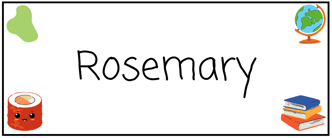
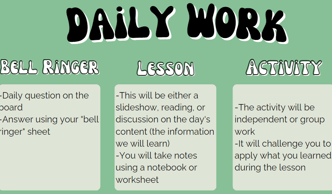

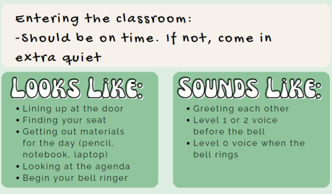

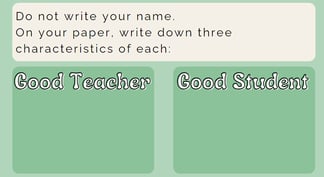

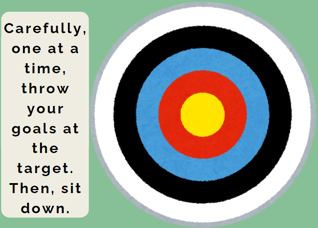

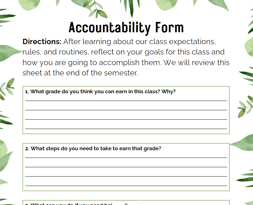

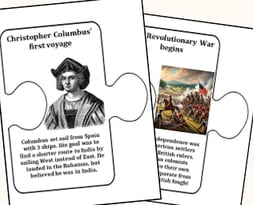

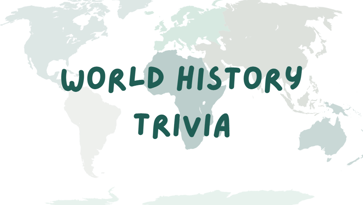

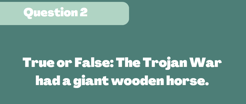

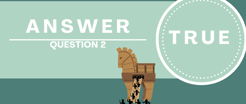

When I was preparing for my first year of teaching, my most anticipated lessons were for the first week of school. I knew the first days were my opportunity to set expectations and make connections, but I had no idea what to do!
So many of the first week ideas I found either felt too “elementary” for my 6th-11th grade classroom or didn’t fit my teaching personality. After much research, trial and error, and planning, I finally created a set of first week lessons that my students and I love!
Read below to see what I do each day in the first week, with resources pictured and linked!
Day 1 - First Day Introduction
First Day Bell Ringer - Name Tents
I start the class in a classic way - by greeting students at the door!
I have students sit in assigned seats because I find that makes the transition time between classes much quicker. Each desk has small pieces of paper and markers for making name tents. As they settle into their seats, I have a bell ringer written on my whiteboard that reads:
“Welcome!
Bell Ringer: Use the paper and supplies on your table to make a name tag
Fold the paper in half
Write your name in the center
Draw in each corner:
Favorite color
Favorite subject
Favorite food
Favorite hobby”
I also include a model for students to reference as they make their name tents. I have students make these name tents for many reasons:
Obviously, to help me learn their names! When I call on them, all I do is look down and read the name on their name tent.
To give them something to do when they enter the classroom. “Empty time” or unplanned time is time for students to get restless, or more likely on the first day of school, anxious. To avoid these feelings, I immediately give them a task.
To provide conversation topics! Making connections in the first week is essential, and these name tents include personal details that I love to comment on to start a conversation!
First Day Lesson - Teacher and Class Introduction
Once students have made good progress on their name tents, I move on to my first day of school slideshow. This slideshow includes an about me section, favorites section, class expectations, daily work, and a breakdown of routines. While I am presenting this slideshow, I move around the room and include many checks for understanding, modeling, and opportunities for students to ask questions.
I used to think that teaching routines were unnecessary for secondary students, but after my first year struggles I realized I was WRONG! If the students already know the routines, great, they get a review after summer break! But if they don’t, you need to be the one to set the expectation of every procedure in your classroom. From turning in work to getting a drink of water, I include every detail in my first day presentation.
KEY ADVICE: Do not let your first day of school (or first week) be the only time you review expectations and routines. Keep modeling, practicing, and reminding students about procedures for the first couple weeks (or months for middle schoolers). The stronger the foundation of expectations of routines, the smoother your year will be!
Interested in my first day of school presentation template? Click here!
Day 2 - Getting to Know You!
Second Day Bell Ringer - Student Information Sheet
Once students have a foundational understanding of the classroom routines and expectations, I start my “get to know you” activities! To begin class on the second day,. I pass out my student information sheets complete with personal and academic questions. The information I learn from these sheets help me make connections with my students and better support them in my classroom!
If you are interested in my Student Information Sheet printable, click here!
Second Day Activity - Get to Know You Bingo
Now it’s time for students to get to know each other! The best icebreaker activity I found was this Get to Know You Bingo from Building Book Love. Her bingo template is a great way for students to share facts about themselves and see what they have in common without having to speak to the entire class.
How I use this resource: First, students take plenty of time to fill in their bingo squares with pictures or words that represent them and their interests. I complete my own card and show them as a model. Then, they move around the room and try to get bingo by having their classmates sign a box that they have in common. (Example: You wrote sushi and I also love sushi, so I will sign the sushi box!)
Here is the link to her Insta post showing this activity!
Day 3 - Accountability
Third Day Activity - On Target
On the third day, I focus more on course-related activities. This simple activity helps students shake off the first week jitters while also teaching an important lesson on accountability!
First, I give students one sticky note each. On that sticky note, I ask them to write three characteristics of a good teacher and three characteristics of a good student.
Now for the unexpected part. I ask all students to crumble the paper and line up one table at a time. I explain that these characteristics are goals for me and goals for them. We want to reach our goals, or be “On Target.” To symbolize reaching their goals, I have each student throw their paper at the target. This always gets some laughs from students who did not expect to get to throw things in class in the first week!
Finally, I have each student grab a piece of paper from the ground. This should ensure that everyone has a different paper than the one they wrote. I then ask students to tell me the characteristics they have written down, which they are more willing to do since it is not their original paper!
Once I have written all the characteristics on the board, I discuss common characteristics and prompt students to explain their reasoning. Finally, I tell them that the student characteristics should be their goals for the year, while the teacher characteristics are my goals for the year.
The target activity is included in my first day of school presentation template, which you can find if you click here!
To finish off this accountability exercise, I have students fill out an accountability handout. This handout prompts them to reflect on their academic goals for the year. Students write down their goals for the course, actionable steps to take to reach their goals, and how they can get help along the way. I save the forms in a file. At the end of the grading periods, I can pass the forms back and prompt students to reflect on their efforts and outcomes!
Click here for the Student Accountability Form!
Day 4 - Introducing Content
Fourth Day Bell Ringer - Timeline Puzzles
The fourth day is content focused, but not using curriculum yet! I use the fourth day as an opportunity to introduce my subject to students in a fun, relaxed way.
I teach history classes, so I like to start class off with a low stakes, engaging timeline puzzle! Students arrange events we will cover in class in timeline order to the best of their ability. This is a great way to give students a preview of the content while also assessing what they already know! Students also tend to bond over not knowing many of the events and working together to put them in order!
If you don’t teach history, try to find a low-stakes activity that introduces your class. For ELA, that could look like a book preview of what you’ll read this year. For any subject, you could do a flash card matching or memory game activity.
Are you a social studies teacher who wants to use these timeline puzzles? Click here to access them!
Fourth Day Activity - Why Study ____?
As our content-focused activity, I have students complete stations inspired by History 4 Human’s Why Study History Activity. This activity has students up, moving, and considering why history is important to the world and to them!
“Why Study” stations can be done with any subject, so feel free to make your own, or find some already made activities! The one I used included 6 different reasons to study my subject. At each station, students evaluated the reasoning and ranked them from strongest to weakest. We finished class with a discussion on the strongest reason to study our subject.
Day 5 - Bonding Time!
Fifth Day Activity - Team Trivia
The final day of the first week is focused on FUN! The ultimate goal is for students to feel comfortable in the classroom and bond with their classmates. How do I do this? With TRIVIA!
I group students in random groups and have them compete to answer content-related questions (and a couple trivia questions about me to spice it up!). The team with the most points gets candy (although I give them all a piece at the end of class)!
I try to make the trivia questions pretty basic to not intimidate students, but I do throw in some unique and interesting ones to intrigue them! Students get pretty competitive and have a great time making guesses!
Teacher secret: This is another great way to figure out how much students already know about your subject!
If you teach history and don’t want to spend the time making your own trivia game, I have already made three subjects worth of trivia. You can find it if you click here!
Those are my five days worth of first week of school lessons for secondary students! I hope this helped you come up with some ideas for what to do your first week of school.
If you are interested in my back to school resources, I have a discounted bundle available here!
If you are a history teacher, I have a social studies specific bundle available here!
